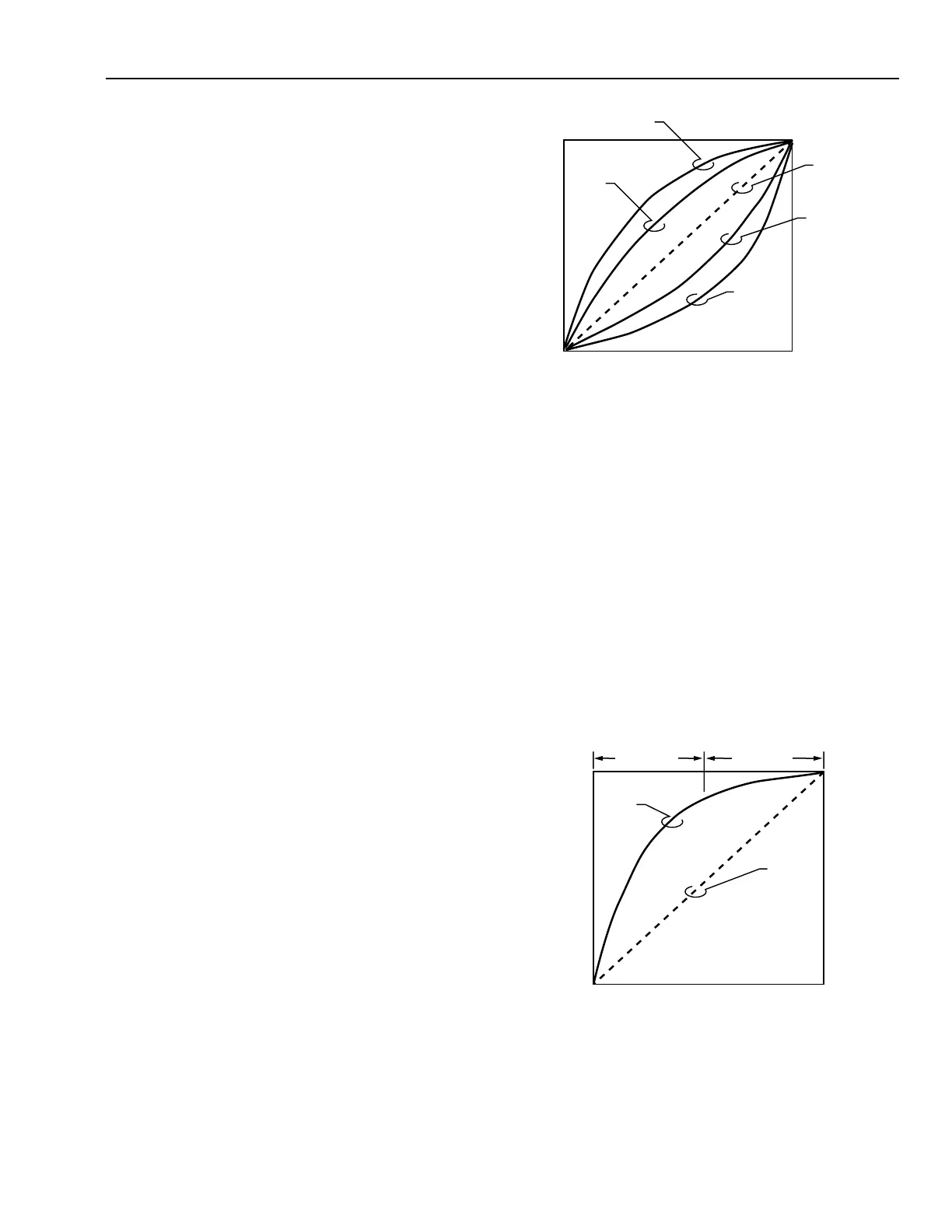ENGINEERING MANUAL OF AUTOMATIC CONTROL
DAMPER SELECTION AND SIZING
461
A damper size of 915 mm by 1475 mm (1.350 m
2
) would be
selected for this application since, 915 mm is the largest damper
dimension which will fit in the 915 mm width of the duct.
OTHER DAMPER SIZING
CONSIDERATIONS
TWO-POSITION CONTROL
1. Typically, duct size parallel blade dampers are selected as
they present a lower pressure drop compared to opposed
blade dampers of equal size.
2. Check that the damper meets maximum velocity,
maximum static pressure, and leakage requirements.
MODULATING CONTROL
1. Determine application requirements and select parallel
or opposed blade damper.
2. Check that the damper meets maximum velocity,
maximum static pressure, and leakage requirements.
OVERSIZED DAMPER CHARACTERISTICS
DAMPER PERFORMANCE
An oversized damper is one that has a characteristic ratio
higher than 2.5 for parallel blade dampers or 10 for opposed
blade dampers. The resultant characteristic curve of an oversized
damper can be seen in Figures 29 and 30 represented by the
high ratio curves. These are well above the ideal linear curve.
The result of oversizing is that a large percentage of the full
airflow occurs when the damper is open to only a small
percentage of its full rotation.
By using a smaller damper, the percentage of the pressure
drop increases across the damper. The performance curve shifts
from the oversized curve, through the linear curve, and towards
the inherent curve which is based on 100 percent of the system
pressure drop across the damper. The oversized damper
characteristic is based upon a majority of the system pressure
drop being across the series resistance rather than the damper.
The actual curve can approach the linear curve if the proper
initial resistance ratio for the damper has been selected. See
Figure 32. An oversized parallel blade damper causes a greater
deviation from the linear characteristic than an oversized
opposed blade damper which can be corrected by selecting a
smaller damper to take more of the total pressure drop.
Fig. 32. Comparison of Oversized Parallel versus
Oversized Opposed Blade Dampers.
CONTROL SYSTEM SENSITIVITY
An oversized damper with a nonlinear characteristic curve
causes the sensitivity of the system to change throughout the
damper operating range as shown in Figure 33. The first
50 percent of the opening results in 85 percent of the airflow;
the last 50 percent, only 15 percent of the airflow. As the percent
damper opening varies, the sensitivities of the system at the
associated damper positions are considerably different.
Increasing sensitivity can cause the system to hunt or cycle
resulting in poor control. As the characteristic curve of the
damper becomes more linear, the sensitivity of the system
becomes more constant and allows more stable control.
OVERSIZED PARALLEL BALDE
DAMPER CURVE
OVERSIZED
OPPOSED BLADE
DAMPER
CURVE
LINER
(IDEAL)
CURVE
INHERENT
PARALLEL
BLADE
DAMPER
CURVE
INHERENT
OPPOSED
BLADE
DAMPER
CURVE
% DAMPER OPENING
C1493
% FULL AIRFLOW
100
0
0 100
Fig. 33. Effects of Oversized Damper
on System Sensitivity.
HIGH
SENSITIVITY
LOW
SENSITIVITY
OVERSIZED
DAMPER
CURVE
LINER
(IDEAL)
CURVE
% DAMPER OPENING
C1496
% FULL AIRFLOW
100
0
0 100

